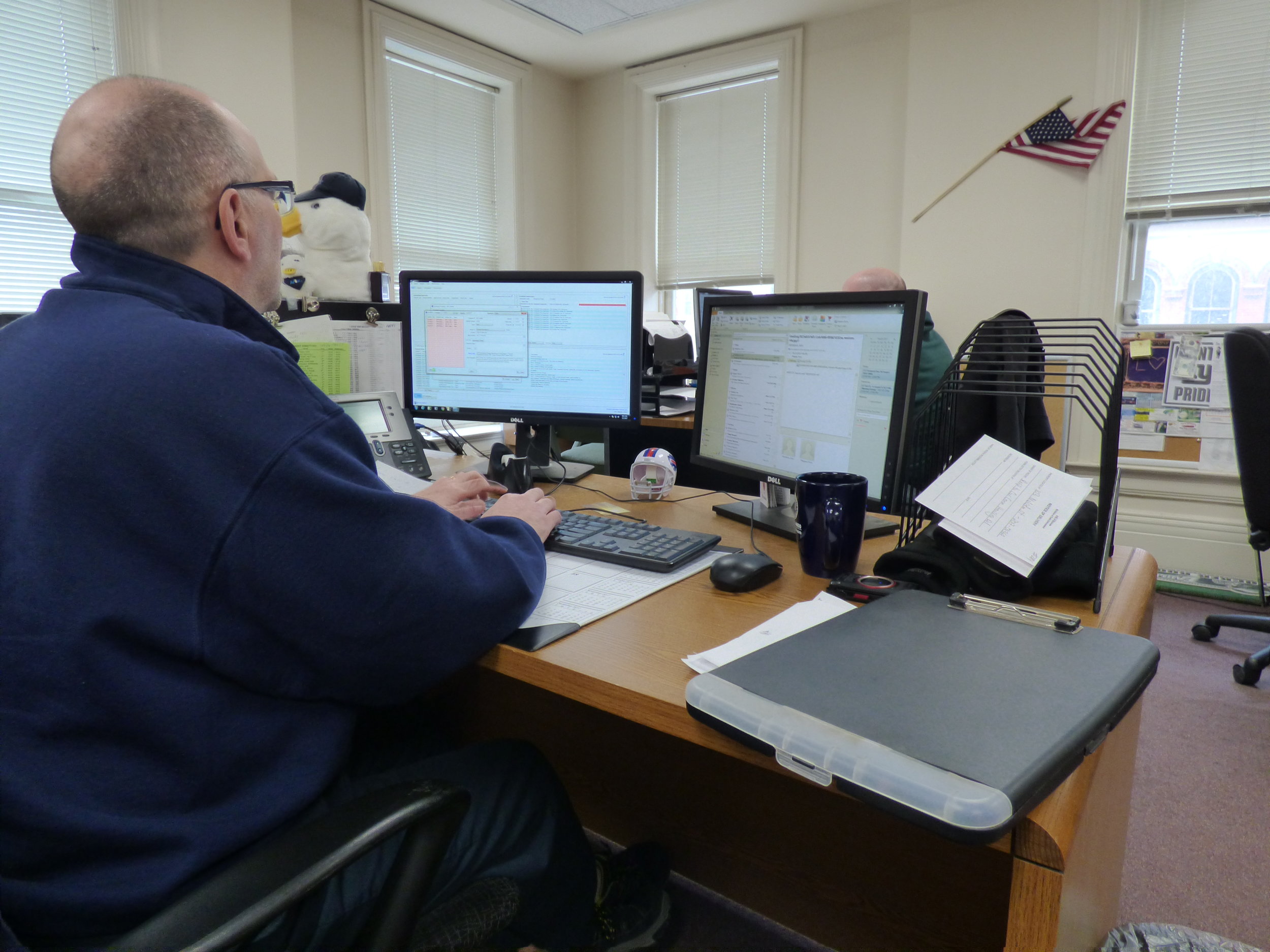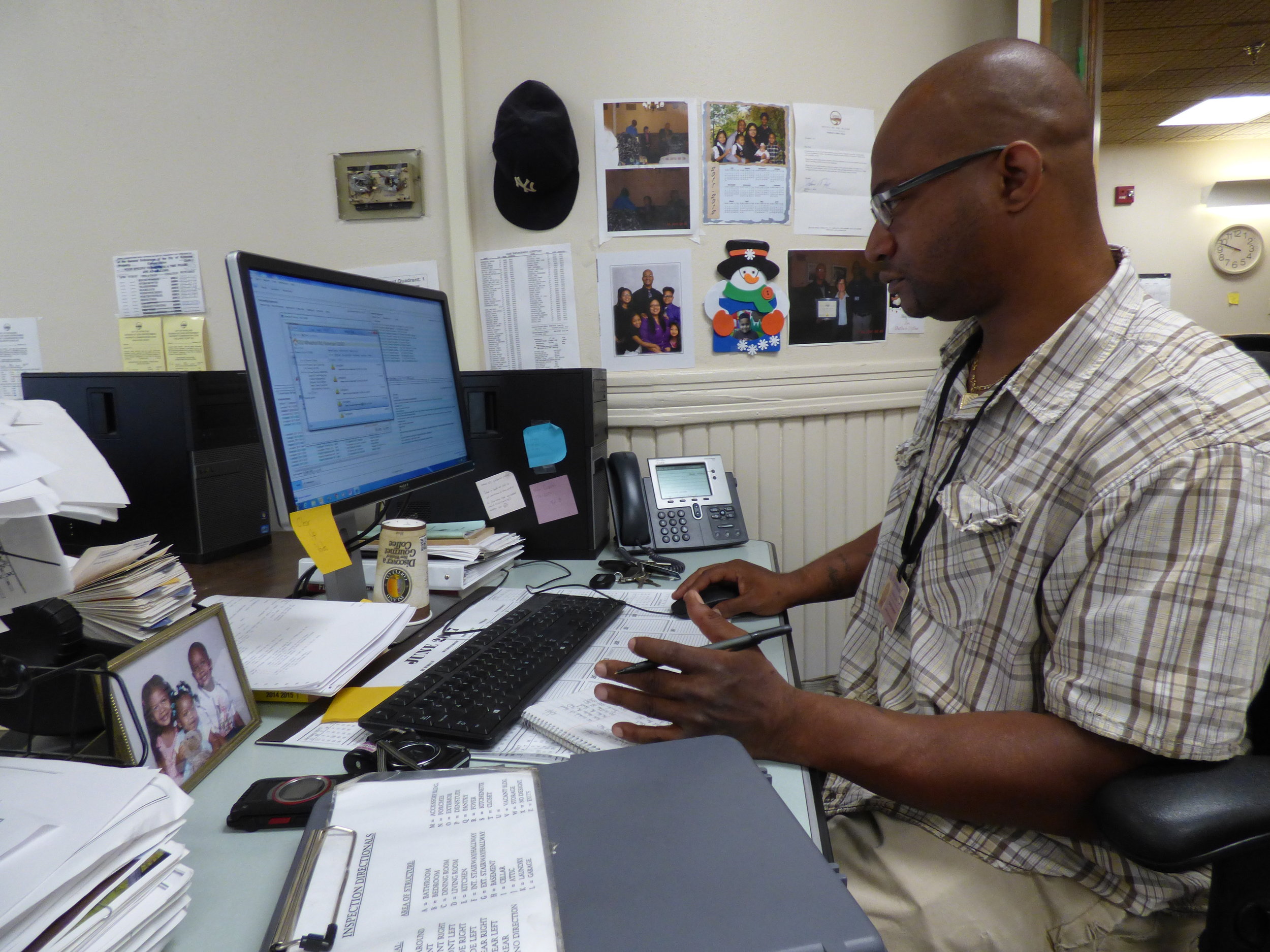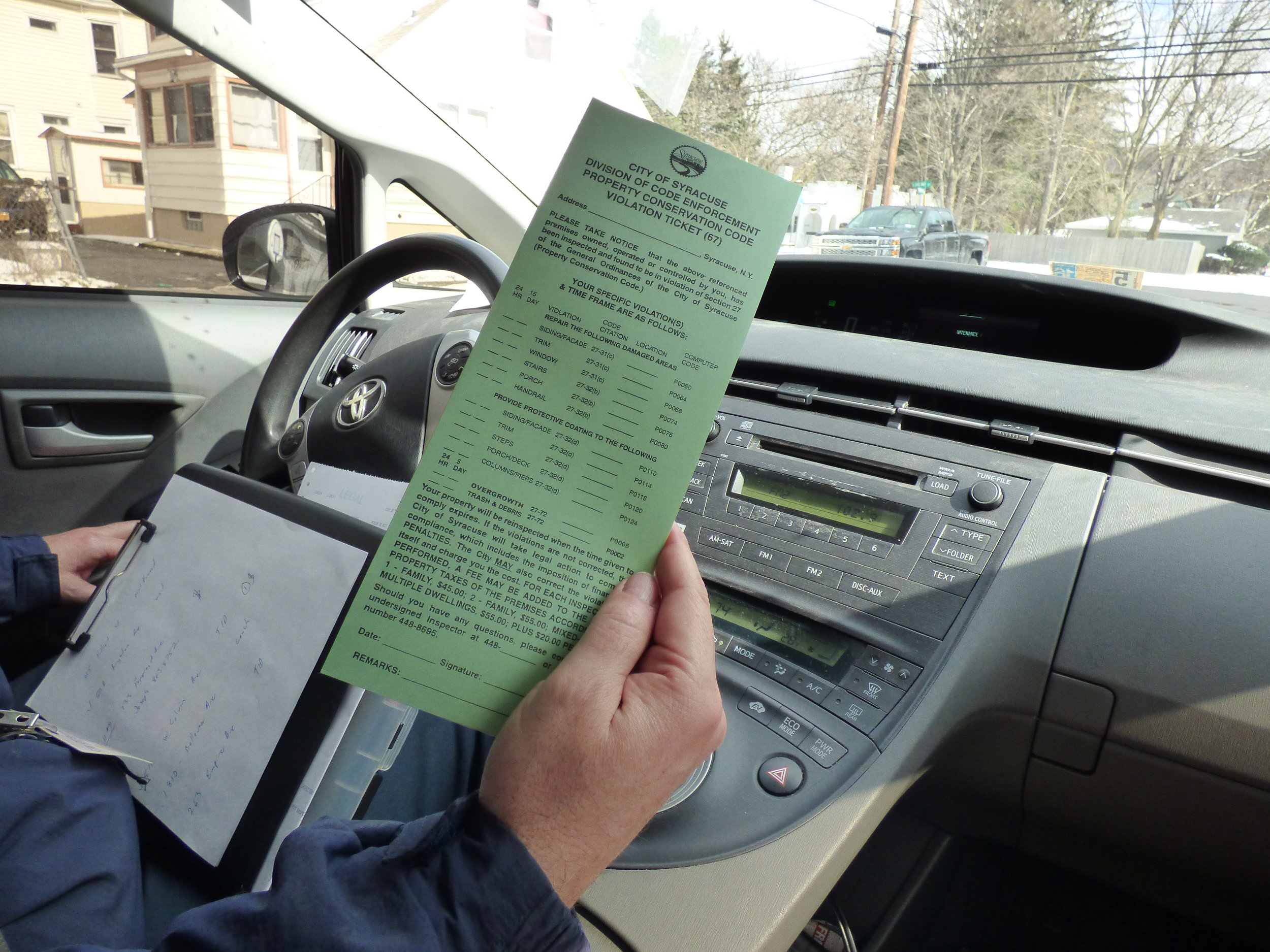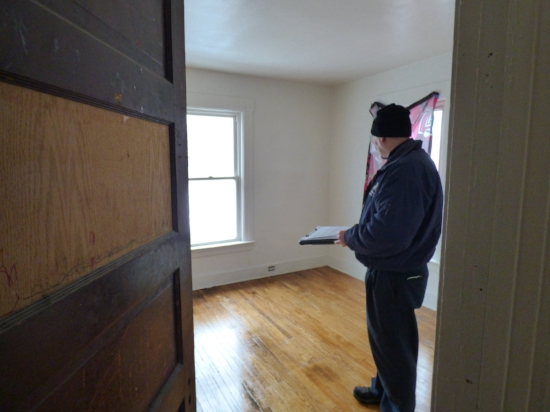“Preparation is key. I can’t stress that enough. Do whatever it is that you need to prepare for your day, whether that’s having a cup of coffee or saying a prayer, and you’ll be able to take on anything.”
That’s how one of our inspectors starts his day, with coffee and a prayer. Once he gets into the office, he has a much more rigorous preparation process for the day’s cases. All of our inspectors do.
Each morning, the inspectors check their schedules for the day’s inspections. They open each case file to review the complaint, the notes, and the status in the City’s computer system. They record this information in a variety of ways, unique to each inspector. Some write out notes on a notepad, others print out copies of the letter that is sent out with the list of violations to take notes on. A few even map out their cases for the day, allowing them to drive from the center of the city outwards (or vice versa) instead of having to continually circle around multiple times within their assignment areas.
After an hour (or often more) of prep, they set out with notepads in hand for their scheduled inspections. Exterior inspections are fairly simple - it’s quick and easy to see from the outside if the grass has been cut, trash has been picked up, or porch has been painted. Interior inspections are more complicated - they require a property owner or tenant to let the inspector back into the property to check things like smoke detectors, chipping paint, or a broken furnace. The inspectors often struggle to get property owners to reach out and schedule a re-inspection.
One of our inspectors re-inspecting a single-family rental, unoccupied at the time of inspection.
The inspectors have cameras and take photos of every listed violation, documenting whether or not it has been completed. Inspectors will stop to cite exterior violations that they see in their neighborhoods as they drive between inspections. At the end of the day, they take all of their notes from each case and type them back into the computer system and attach the pictures. They close completed cases, open new ones, and update the notes for the ones in between. This is an additional 1-2 hours of desk time. If they are unable to complete it, they finish logging that information in the next morning before starting their prep for the day.
“It’s hard to reach compliance. If we can’t get in contact with anybody, it won’t happen. The process is slow, notification is slow…” one inspector detailed.
An inspector documenting the status of an overgrowth violation.
When a property is cited for a code violation, a letter is sent to the property owner’s address and a copy is placed on the property itself. That process, however, can take from 5 days to a couple of weeks, depending on where the mail has to go. Once the letter does reach the owner, seldom do they reach out to the Division of Code Enforcement. In 2016, only in 18% of cases did the Division of Code Enforcement receive a phone call from the property owner or manager.
“If they just call, I can work with them. If they’re in contact and showing progress on making the fixes, I can work with them. If I never hear anything, then there’s nothing I can do” said another.
A property where the Division of Code Enforcement has been unable to get in contact with the owner and reach compliance.
The notification timeline also doesn’t line up with timelines to fix the violations. Violations that are a threat to health and safety often have to be remedied within 24 to 72 hours. If they aren’t, a home can be declared “unfit” to live in, causing tenants to have unplanned and costly moves. The City cites anywhere between 15 and 44 of these “unfit” violations each month.
In 2016, 75% of all complaints showed no progress by the comply-by date (the date set for the violation to be fixed by), which can range anywhere from 3 to 30 days. When this happens - inspectors have received no contact about a case and are seeing no improvement on conditions - their best tool to reach compliance (to have the violation fixed) is to refer the case to the City’s Law Department. Once a case is in Law, it could take up to 2-3 years to get through the legal process. At that point, the property could have changed hands, and the legal servicing process has to start over again. Currently, 369 open cases are in the Law Department. Some cases have taken a maximum of up to almost 5 and a half years to reach compliance.
“Nobody takes us seriously,” many inspectors have told us, “[property owners] know we can’t do a lot, and they know that when their case goes to Law that it will be a long time before anything happens.”
Our Director of Code Enforcement and inspectors detailing their process in an ideation session.
When code violation cases don’t reach compliance, it is a signal of the degradation of Syracuse’s housing quality and conditions. In 2016, 93% of health and safety related violations alone were not resolved by the comply-by date. As we’ve detailed in an earlier post, unsafe and unhealthy housing conditions can lead directly to health problems for our residents, such as elevated blood lead, respiratory ailments, and exposure to cancer-causing toxins.
“I want to be able to focus on what’s really important. Our jobs are to make sure people are safe, really. I want to focus on helping people.”
So how can we improve our Division of Code Enforcement’s ability to reach code compliance? We have a few ideas:
Municipal Violations Bureau
As many of you may have heard, the City of Syracuse has been approved to set up a Municipal Violations Bureau, or a Bureau of Administrative Adjudication. This would allow the Division of Code Enforcement to issue a ticket when they are receiving no cooperation instead of only being able to refer a case to the Law Department. By issuing a ticket for code violations, fees can be assessed and compliance reached at a max of 90 days, rather than taking years in the legal process. It will also give our Law Department more time and resources to focus on our most egregious cases. We are assisting our Department of Neighborhood and Business Development to get this up and running.
DOCE Outreach Program
The Division of Code Enforcement (DOCE) Outreach Program was started by our Department of Neighborhood and Business Development to help address the disconnect in notification times and comply-by dates. As mentioned above, it could take days to weeks for a property owner to receive notification that they have a violation on a property. Now, when DOCE receives a complaint, code enforcement staff make phone calls to property owners to alert them of the issue before an inspection is scheduled. Not only is this addressing the notification lag time, but is also allowing the Division of Code Enforcement to close some cases without having to send an inspector out at all. Our office is helping to standardize the process for this program and set targets and metrics to evaluate its success.
Prioritizing Health and Safety
Our main concern about a lack of code compliance is the impact that has on the health and safety of our residents. What are our major health and safety violations, and how can we give code enforcement staff the resources they need to prioritize and focus on getting these types of violations fixed?
Community Code Enforcement
How can we better connect our code inspectors to the neighborhoods that they work in? Should they have smaller assignment areas? Should they have the ability to do all kinds of inspections in their areas, or is it better for them to be specialized? What resources can we give them to better reach out to their communities?
Technology
Lastly, how can we use technology to make the Division of Code Enforcement more effective? Tablets in the field for inspectors could be a good place to start, allowing them to reduce their desk time, update cases in real time, and free up their time to focus on the inspections themselves and working with the property owners and tenants. In the field printers could also assist with the letter distribution process.
What are your thoughts on the ideas above? What other ideas do you have to help improve code enforcement? Let us know in comments!








